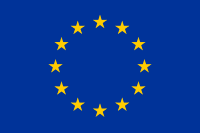Impact & Value Chains
Impact and Value Chains
Capacity Building and Impact
Introduction
An important reference for capacity building is the Capacity Building Playbook created by Europeana. In terms of impact, since 2017 Europeana has put consistent effort into developing the Europeana Impact Playbook, which has become a reference material in the heritage sector.
Creating conditions for more impact
Why build capacity for digital transformation?
For the impact it can create for a heritage institution, its audiences and stakeholders, and wider society. We can talk about this impact in different ways, including using the Europeana Impact Playbook value lenses:
- operational impact - internal innovation of processes and approaches;
- innovation impact - external innovation opportunities, including with audience engagement mechanisms and use of digital heritage data;
- economic impact - resulting, for example, from improved internal processes, new business models, etc;
- social impact - the result of increased public and educational engagement with collections.
In Europeana’s consultative exercise to define digital transformation, a gap emerged, namely that there is no clear vision of what (capacity building for) digital transformation will look like, as well as how it can be monitored and promoted. A Theory of Change is being developed in response to this at Europeana.
What does it mean for CHIs?
CHIs have the opportunity to ask the question of why they should embrace and develop their capacity for digital transformation. The Europeana Impact Playbook and the Phase One change pathway exercise can be a key tool to support this process. The tool can be used to give organisations a perspective on long-term change and strategy, facilitating a focus on the process and activities of institutional change (e.g. developing staff capacity, innovating technical processes) so that change is sustainable and based on future-proof solutions.
They then have the opportunity to ask how they can build capacity for digital transformation. Based on the results of the self-assessment tool and, using the forthcoming Europeana Capacity Building Playbook, they can think about the human capital and technological capacity that should be further developed in their organisation; where the gaps are, and what resources or opportunities exist to help meet those gaps. Thirdly, they can then ask what changed as a result of this process. This brings the perspective back to impact trying to ask questions such as What was the value of their actions? What could be improved? How can future efforts be made more effective?
What tools exist to help skill up cultural heritage professionals on impact?
- Europeana is developing the Capacity-building Playbook to support organisational change. This tool follows the iterative and easy-to-use approach of the Europeana Impact Playbook.
- Europeana has created a form in which the public can list and describe digital heritage capacity-building efforts in their country or that they know about. This will form a crowd-sourced inventory that will be hosted on Europeana Pro and continually updated. Professionals can benefit from this list of relevant resources.
- Impkt.tools (a resource page on Europeana Pro) hosts the Europeana Impact Playbook and a number of accompanying resources, including a standardised question bank and published impact assessments.
- The inDICES self-assessment tool is also conceived for CHIs can also use the self-assessment tool to evaluate where they are in their digital journey.
- Foresight, horizon-scanning and scenario planning exercises, where CHIs creatively think about how they will deliver impact for their stakeholders in different possible versions of the future whilst mapping possible eventualities and change, will be an asset for strategy and activity-planning. There are different accepted methodologies that fall under this type of activity.
- Knowledge-sharing amongst CHIs is key. There is a need to publish case studies that show how CHIs across Europe and at differing levels of digital maturity have built their capacity for digital transformation. As defined in the published working definition of digital transformation, all change, no matter how small, has value and creates impact for stakeholders. Insights into this change have most value when they are widely shared. Europeana PRO and the inDICEs Open Observatory offer room for that.
Read about the value of networks
Test your knowledge by answering a short question:




